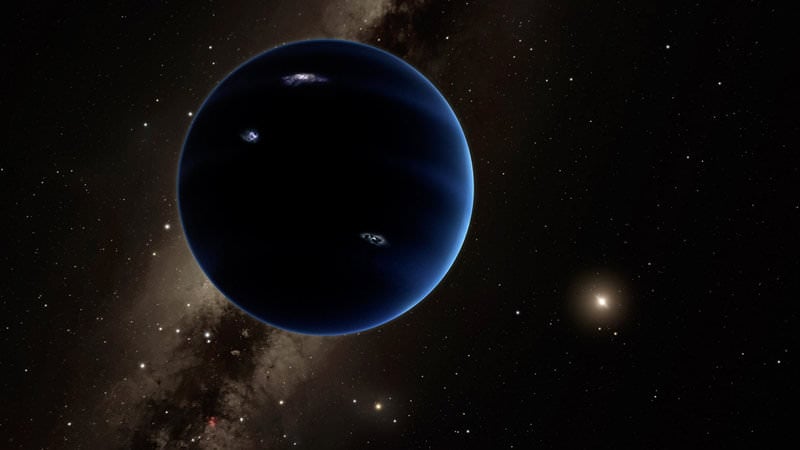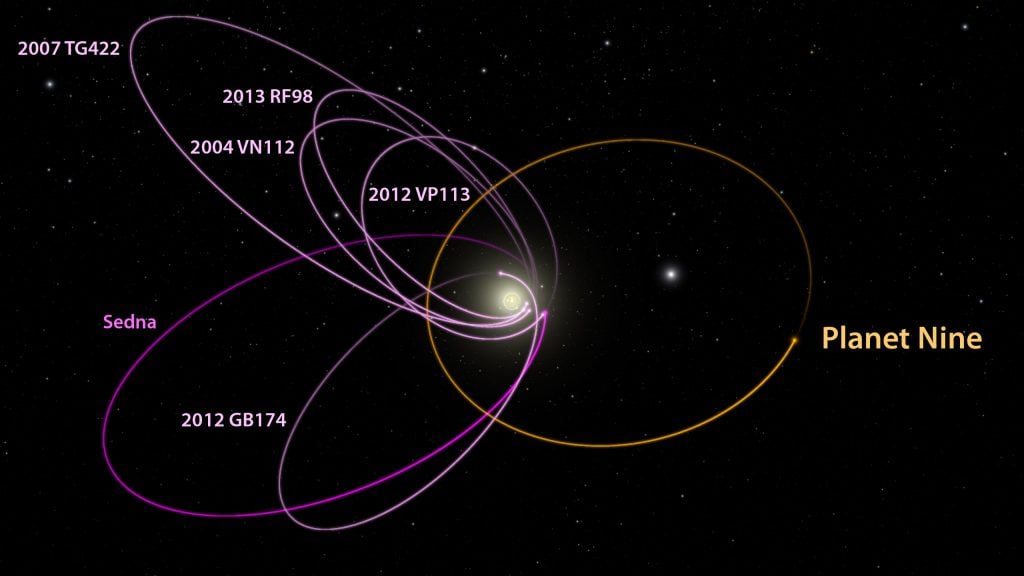Planet 9 continues to remain elusive. This potential super-Earth-sized object in the outer Solar System is only hypothetical, as something out there appears to be gravitationally influencing several Kuiper Belt Objects into unusual orbits. Whatever or wherever it may be, Planet 9 has yet to be found, despite several different hypotheses and numerous observational searches.
But what if Planet 9 has moons? Could they help us find it? A new paper speculates that any moons orbiting the theoretical planet could provide indirect clues to the location of Planet 9, while revealing some basic properties of this mysterious object.
"In this article, we show that the probability of capturing large trans-Neptunian objects (TNOs) by Planet Nine to form a satellite system in the scattered disk region (between the inner Oort Cloud and Kuiper Belt) is large," wrote astronomer Man Ho Chan of The Education University of Hong Kong, in his paper, published as a preprint on arXiv. "By adopting a benchmark model of Planet Nine, we show that the tidal effect can heat up the satellites significantly, which can give sufficient thermal radio flux for observations."
Out beyond the orbit of Neptune, a cluster of Kuiper Belt Objects (KBOs) exhibit strange inclinations in their orbits, as they all line up in a single direction and tilt nearly identically away from the plane of the Solar System. Additionally, the orbit of 90377 Sedna can't be explained by the presence of Neptune alone. That's the where the hypothesis of Planet Nine comes in, where a potential super-Earth, about 5-10 times the mass of Earth could be lurking in the outer solar system, as yet undetected.
Since the theoretical 9thplanet has yet to be found, other researchers have put forth other explanations besides a large planet, such as a disc of icy material, or another study suggested the collective mass of the KBOs themselves was responsible.
Additionally, since no optical and radio signals have been detected so far for Planet 9, other potential explanations that have gained favor is that Planet 9 could be a "dark" object, such as an object made of dark matter, or a tiny primordial black hole.
Man Ho Chan told Universe Today that its highly likely, no matter what Planet 9 actually is – planet, dark planet or primordial black hole -- the likelihood of it capturing moons is quite high, since there are a lot of smaller trans-Neptunian objects scattered out in that region.
"Any planets or objects outside Neptune can easily form satellite systems, especially for massive objects," Chan said via email. "Therefore, this is an important indirect way to search for any planets, even if the planets are black holes or made of dark matter."
How could the moons be revealed? These satellites would give off an observable standard thermal radio spectrum.
"The satellites surrounding the planets outside Neptune are not always very cold," Man Ho Chan explained. "The tidal coupling effect can heat up a satellite to a relatively high temperature so that it has large enough radiation for detection. This might be an effective way for searching even if planet 9 is a black hole as suggested by many recent discussions."
Chan suggested that the Atacama Large Millimeter/submillimeter Array (ALMA) observatory might be able to detect the signal of the satellites, and said via email that PanSTARRS (Panoramic Survey Telescope and Rapid Response System) and the future Large Synoptic Survey Telescope (LSST) might also be able to make such observations.
"If P9 is a dark object and it has a satellite system, our proposal can directly observe the potential thermal signals emitted by the satellites now," he wrote. "Therefore, this would be a timely and effective method to confirm the Planet Nine hypothesis and verify whether Planet Nine is a dark object or not."
 Universe Today
Universe Today


